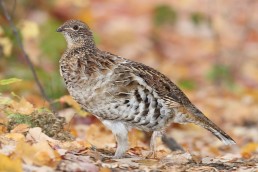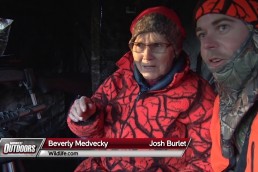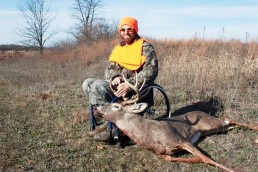Should You Hunt Ruffed Grouse in Iowa?
SHARE THIS POST
In good habitat, the ruffed grouse once covered many parts of Iowa. But, once the land was taken over and vital habitat destroyed, the grouse began their downward trend. Now, they only inhabit a small section of the northeast part of the state. The country is rough, here, with steep, rolling hills unsuitable for farming. Grouse numbers are difficult to estimate, but, as the forests change to yet more unsuitable habitat (older growth), it is the general consensus that grouse numbers are still declining.
I was hunting spring turkeys at the Volga River State Recreation Area, some thirty years ago, when I heard my first Iowa grouse. Deep down in the hilly terrain, I heard one drumming. Heading into the same area the very next day, I flushed one. A good sign, then? Yes, but not so much today. Jeff Hildebrand, Park Ranger for the area, stated, “You are still allowed to hunt grouse in this area, but there have been none (grouse) seen or heard at the Volga River SRA for a couple decades now.”
A very particular type of home
Grouse prefer young-growth forest and seek out the densest cover possible in these types of areas. This type of habitat is dwindling throughout the northeast part of the state. But, on a good note, the state has worked with several private landowners improving grouse habitat in their hopes of benefiting grouse and even woodcock.
Neighboring Minnesota has some of the best habitat for grouse in the nation, easily putting them at the top in terms of yearly grouse harvests. Minnesota is full of young-growth forest. That is why grouse thrive here. The state offers over 50 Ruffed Grouse management areas, giving hunters plenty of land to roam.
Declining birds and hunters go hand in hand. Of course, with fewer birds, there will be fewer hunters. And, with the difficult terrain in which Iowa birds exist, many hunters will pass on hunting them. This very fact could help some in the recovery of the species. In areas where good habitat still exists, reduced hunting pressure will allow the birds to do their thing and hopefully increase in number.
Are you enjoying this post?
You can be among the first to get the latest info on where to go, what to use and how to use it!
A history of being hunted
After 45 years of a closed season on grouse in Iowa, the season was re-opened in 1968. According to a 1969 report by Eugene D. Klonglan and Gene Hlavka of the Iowa State Conservation Commission, “First Iowa Grouse Season in 45 Years,” it went something like this. It was a 16-day season that ran Nov. 2 – 17. During that short season, 1,150 hunters bagged 720 grouse—mostly, of course, in the northeast portion of the state. At that time, there was a fall estimate of 12,000 grouse.
It appears that grouse numbers showed a steady increase over the next ten to fifteen years, at least in the way of harvest numbers. But, they then began to show a steady decline, especially throughout the 1990s.
The northeast section of the state is the last stronghold for grouse in Iowa. Habitat improvement is vital and can be successful because the terrain here is too rough-and-tumble for development or farming, leaving the land to the grouse if they so wish.
Iowa grouse season runs Oct. 6 – Jan. 31, 2019. Hours are sunrise to sunset with a bag limit of 3.
MWO
SHARE THIS POST
Did you enjoy this post?
You can be among the first to get the latest info on where to go, what to use and how to use it!
Kevin Wright
MidWest Outdoors works with more than 200 outdoor experts each year, who contribute articles based on their areas of expertise. MidWest Outdoors magazine offers more fishing and hunting articles than any other publication!



